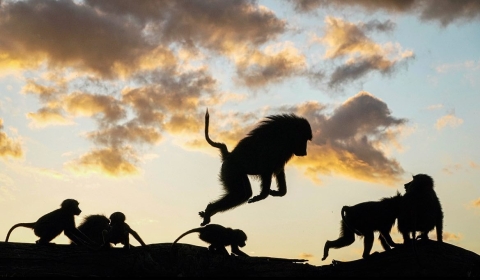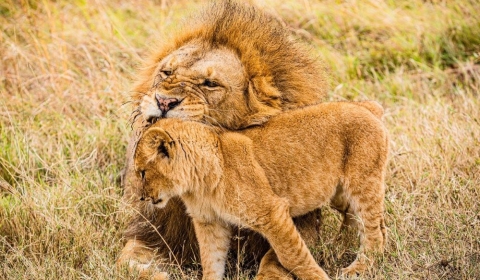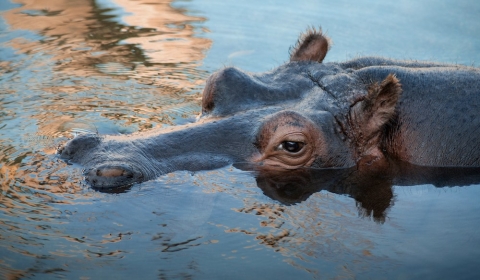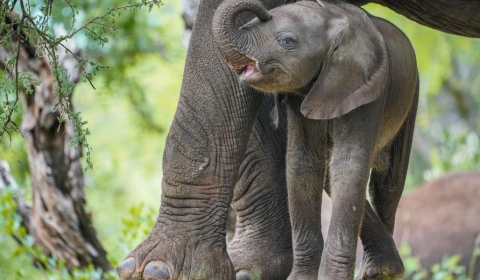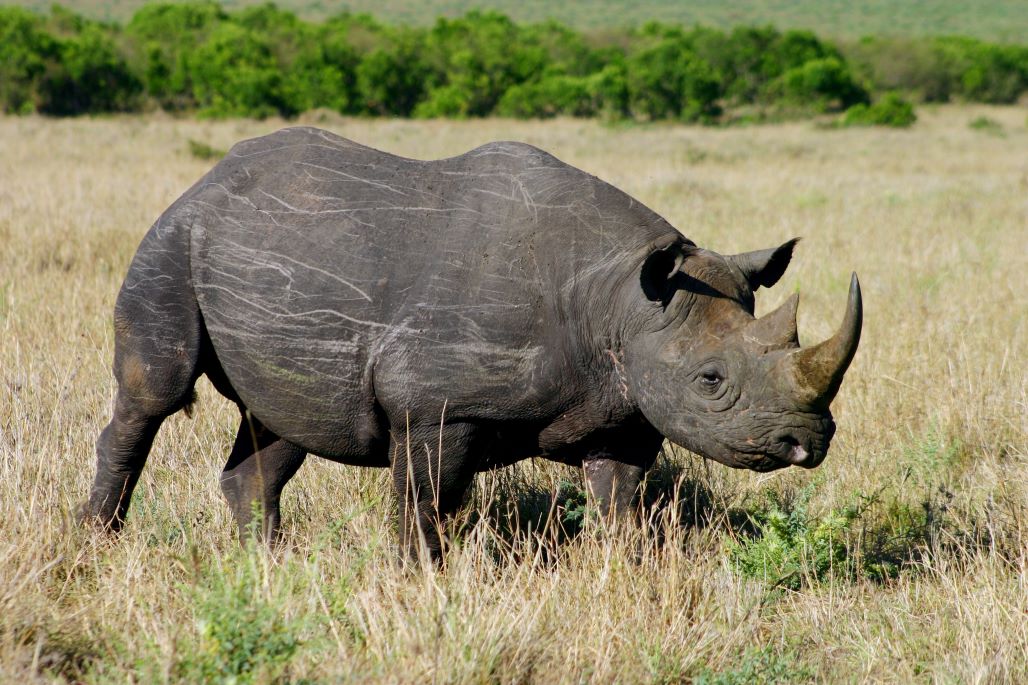
Overview
Location: Northern Tanzania, near the Kenyan border. Size: Approximately 3,245 square kilometers (1,253 square miles). Established: 1951 as a game reserve, upgraded to a national park in 2006.
Geography and Landscape
Mkomazi National Park features a variety of landscapes, including:
Semi-Arid Savannah: Dominated by open grasslands, acacia woodlands, and rocky outcrops.
Mountain Ranges: The Pare and Usambara mountains provide a dramatic backdrop.
Rivers and Dams: Seasonal rivers and waterholes attract wildlife, particularly during the dry season.
Wildlife
Mkomazi National Park is known for its unique wildlife conservation efforts:
Black Rhinos: The park is home to a successful black rhino breeding program, one of the few places in Tanzania where they can be seen.
African Wild Dogs: Also hosts a breeding program for African wild dogs, a critically endangered species.
Elephants: Large herds of elephants migrate through the park, particularly during the wet season.
Other Mammals: Includes giraffes, zebras, elands, oryx, lesser kudu, gerenuk, hartebeests, and various species of antelope.
Birdlife: Over 450 species of birds, including ostriches, Kori bustards, and several raptor species.
Conservation Efforts
Mkomazi National Park is a model for integrated wildlife conservation:
Rhino Sanctuary: A fenced sanctuary dedicated to breeding and protecting black rhinos.
Wild Dog Breeding Program: A successful initiative to increase the population of African wild dogs.
Anti-Poaching Measures: Robust anti-poaching patrols and community involvement to protect wildlife.
Habitat Restoration: Efforts to restore and maintain the park's diverse ecosystems.
Tourism
Activities: Mkomazi offers a range of activities for visitors:
Game Drives: Explore the park’s diverse habitats and spot a variety of wildlife.
Walking Safaris: Guided walks provide an intimate experience with the park’s flora and fauna.
Bird Watching: Excellent birding opportunities due to the park's rich avian diversity.
Rhino and Wild Dog Viewing: Unique opportunities to see black rhinos and African wild dogs in their natural habitats.
Accommodation: Options range from basic campsites to luxury lodges, with facilities offering stunning views and comfortable stays.
Best Time to Visit: The dry season (June to October) offers the best wildlife viewing, though the park is accessible year-round.
Unique Features
Rhino and Wild Dog Programs: Mkomazi is dedicated conservation programs make it a unique destination for seeing these rare species.
Scenic Beauty: The park’s diverse landscapes, from semi-arid savannahs to mountainous regions, offer spectacular scenery.
Less Crowded: Mkomazi is less visited compared to other Tanzanian parks, providing a more exclusive and tranquil wildlife experience.
Visitor Information
Access: The park is accessible by road from Arusha, Moshi, or Dar es Salaam, and there are also airstrips for charter flights.
Entry Fees: Visitors must pay entry fees, which support the park’s maintenance and conservation efforts.
Regulations: Visitors should adhere to park regulations to protect the wildlife and environment, such as staying on designated paths and respecting wildlife.
Highlights
Black Rhino Sanctuary: One of the highlights is visiting the fenced sanctuary to see black rhinos up close.
African Wild Dogs: Mkomazi’s wild dog breeding program is a significant conservation effort, offering rare sightings.
Diverse Ecosystems: The park’s varied landscapes provide habitat for a wide range of wildlife and bird species.
Community Projects: Engagement with local communities in conservation and sustainable tourism initiatives.
